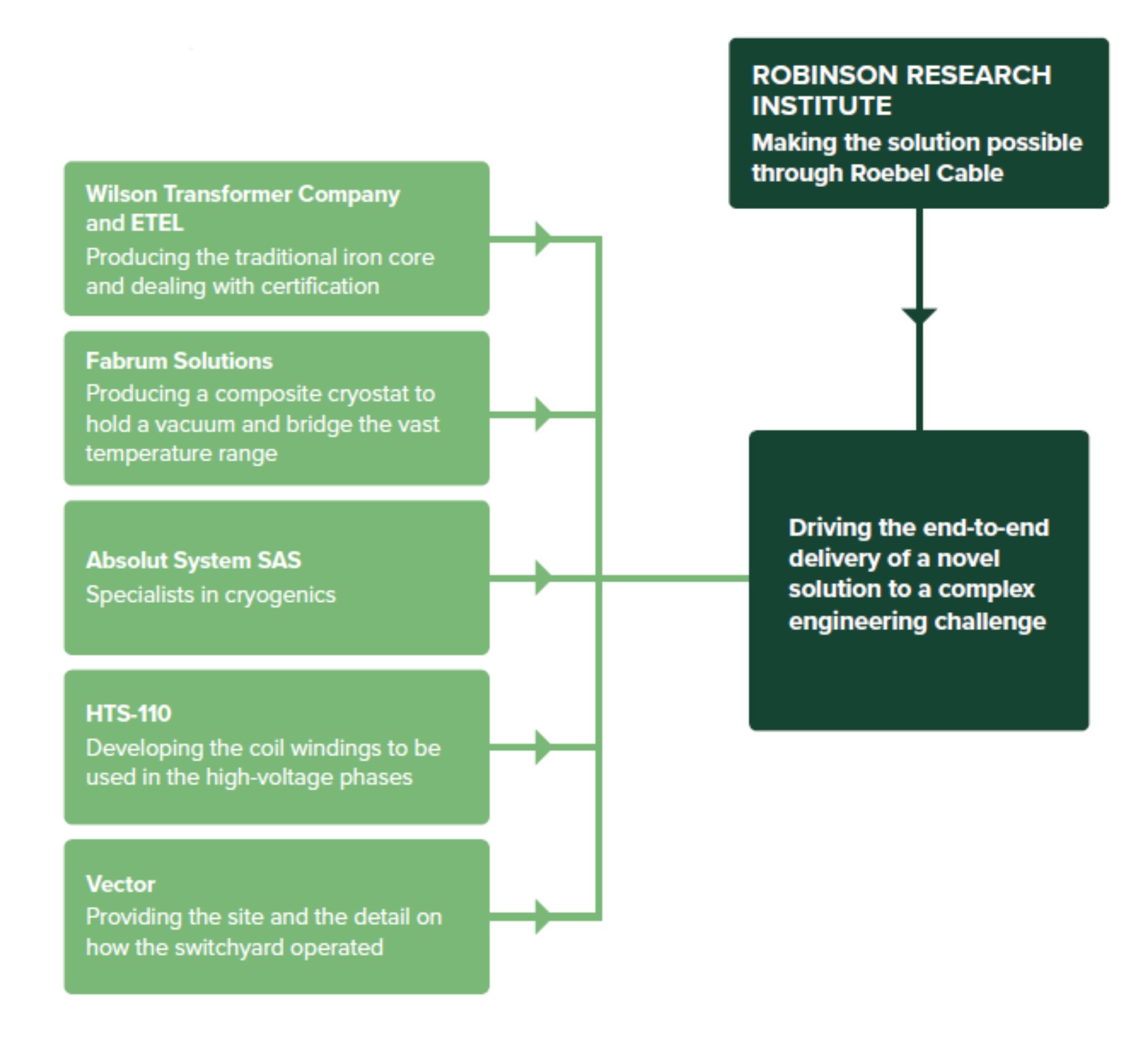A superconducting transformer
We managed a multi-company team to deliver a compact 1 MVA superconductor transformer that was safer and more efficient than a conventional oil-filled solution.
Adding a new transformer in a city location presents problems for any utility. Not only is space at a premium, but locations that may be basements are not ideal for transformers that are filled with hundreds of litres of oil. Effectively, there is a need to provide more power from the same space, while also reducing the risk of fire.
When our experts at Paihau—Robinson Research Institute heard of the requirement for high power and high current density in a small space, they instantly knew the answer had to be a superconductor. The Institute had already developed the loss-preventing performance of superconductor Roebel cable for generators and motors, and proposed that it would work in a transformer. To demonstrate the solution required a team who could design all aspects of the transformer, including the cryogenic systems.

What we delivered
We worked with a number of partners to develop a 1 MVA superconducting transformer. We demonstrated that a superconductor transformer could be more efficient than a conventional transformer at this scale. The project required a strong, multi-company team that we brought together and managed.
The partners driving the end-to-end delivery of a novel solution to a complex engineering challenge were:
- Paihau—Robinson Research Institute—making the solution possible through Roebel cable
- Wilson Transformer Company and ETEL—producing the traditional iron core and dealing with certification
- Fabrum Solutions—producing a composite cryostat to hold a vacuum and bridge the vast temperature range
- Absolut System SAS—specialists in cryogenics
- HTS-110—developing the coil windings to be used in the high-voltage phases
- Vector—providing the site and the detail on how the switchyard operated.
Why it was a success
And not only was our team at Paihau—Robinson Research Institute proud of the outcome, we also took great satisfaction from the boost it gave to two of our partners. Fabrum Solutions and Absolut System both went on to use the new capabilities they had developed to grow their businesses internationally and teamed up to form a successful joint venture called AF Cryo.
